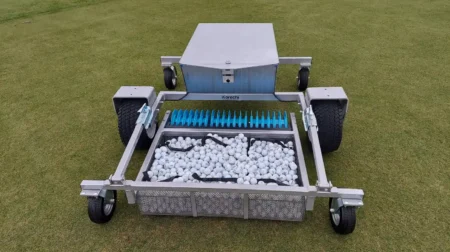FIFA, football’s international governing body, has announced that semi-automated offside technology will be used at the World Cup in Qatar this winter as a support tool for the video match officials and on-field officials.
Development of the semi-automated offside technology builds on the use of VAR (video assistant referee) technology at the 2018 FIFA World Cup in Russia.
The new system uses 12 dedicated tracking cameras mounted underneath the roof of the stadium to track the ball and up to 29 data points of each individual player, 50 times per second, calculating their exact position on the pitch.
The 29 collected data points include all limbs and extremities relevant for making offside calls.
Al Rihla, Adidas’ official match ball for the tournament, will provide a further element for the detection of offside incidents as an inertial measurement unit (IMU) sensor will be placed inside the ball.
The sensor, positioned in the centre of the ball, sends ball data to the video operation room 500 times per second, allowing a very precise detection of the kick point.
By combining the limb- and ball-tracking data and applying AI, the new technology provides an automated offside alert to the video match officials inside the video operation room whenever the ball is received by an attacker in an offside position at the moment the ball is played by a team-mate.

Before informing the on-field referee, the video match officials will validate the proposed decision by manually checking the automatically selected kick point and the automatically created offside line, which is based on the calculated positions of the players’ limbs.
According to FIFA, this process happens within a few seconds and should mean that offside decisions can be made faster and more accurately.
After the decision has been confirmed by the video match officials and the referee on the pitch, the exact same positional data points that were used to make the decision are then generated into a 3D animation that details the position of the players’ limbs at the moment the ball was played.
This 3D animation will then be shown on screens in the stadium and will also be made available to FIFA’s broadcast partners to inform all spectators.
FIFA president Gianni Infantino said: “This technology is the culmination of three years of dedicated research and testing to provide the very best for the teams, players and fans who will be heading to Qatar later this year, and FIFA is proud of this work, as we look forward to the world seeing the benefits of semi-automated offside technology at the FIFA World Cup 2022.”
The semi-automated offside technology and the connected ball technology have been trialled at numerous test events and live at FIFA tournaments, including the FIFA Arab Cup 2021 and the FIFA Club World Cup 2021.
The data collected during online and offline tests has been analysed and validated by MIT Sports Lab, with TRACK at Victoria University scientifically validating the limb-tracking technology.
Further insights into the technological capabilities of such multi-camera tracking systems are being provided by a research team at ETH Zurich.
According to FIFA, more tests will be conducted in the coming months to fine-tune the system before a global standard is implemented to ensure that the new technology can be used in football globally.









